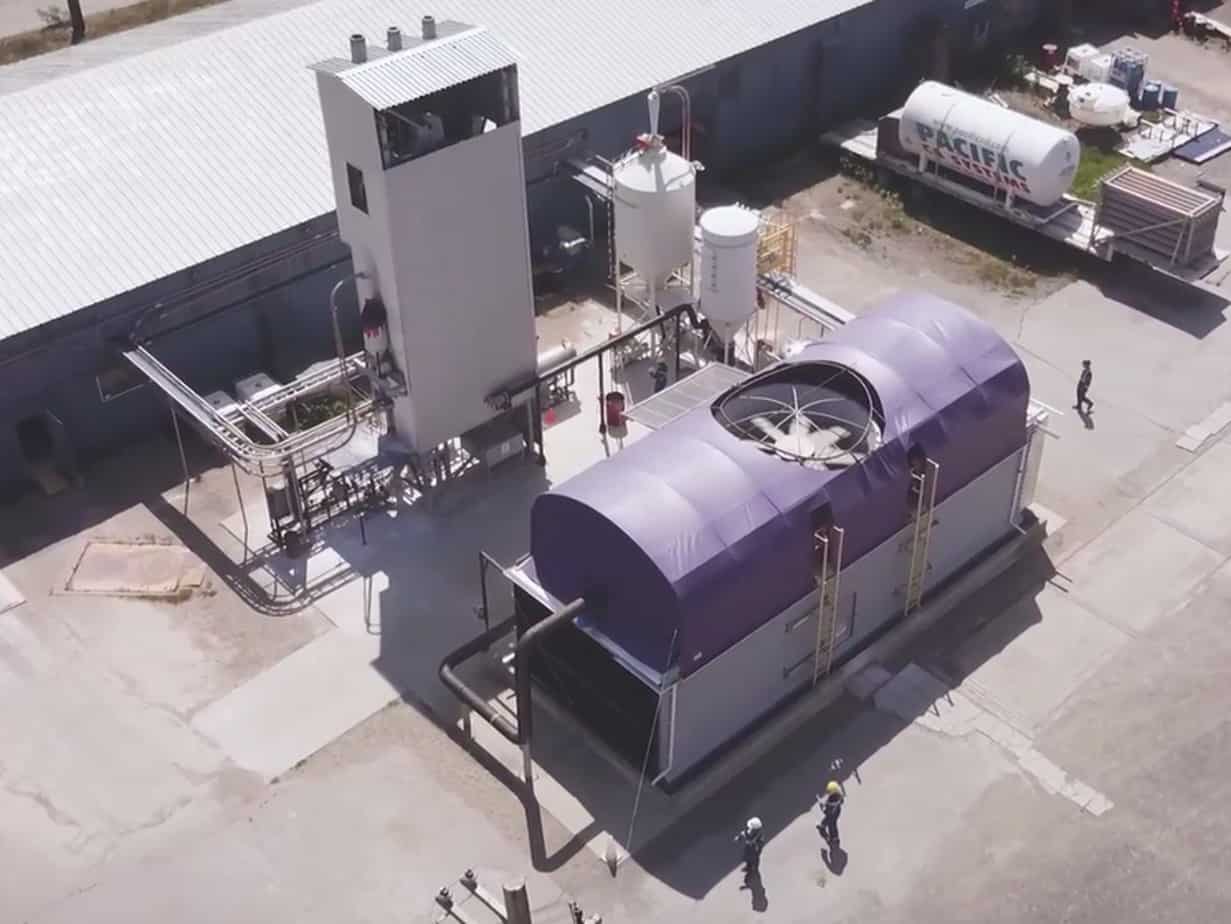But it might fill in a few key pieces of the clean energy puzzle.
Climate change is caused by putting carbon dioxide into the atmosphere. What if, instead, we took it out?
The idea of pulling carbon dioxide directly out of the air has been bouncing around climate change policy circles for well over a decade, but it’s only been in the past few years that the technology itself — “direct air capture,” or DAC — has been tested in the real world.
In June, we got the first solid engineering and cost numbers on DAC, courtesy of a company called Carbon Engineering out of Calgary, Canada.
In a paper in the new energy journal Joule, the company (led by its founder, Harvard’s David Keith) reports its experience over the past three years running a DAC demonstration plant in Squamish, British Columbia. It’s the clearest look yet at how DAC might actually work, not just as a technology but as a business. “I’m impressed with the degree of transparency, detail, and clarity in the Joule paper,” Dr. Julio Friedmann, a former Obama appointee at the Department of Energy and a distinguished associate at the Energy Futures Initiative, told me. “It sets the standard for future players.”
The headline news from the paper is that the cost of capturing a ton of CO2 — estimated at around $600 in 2011 — has fallen to between $94 and $232. Almost any source of renewable energy can prevent a ton of carbon for cheaper than that, but still, down at the lower end, beneath $100, DAC starts to look viable in a low-carbon world.
Something about the idea of pulling carbon out of the air really struck a nerve. The study was met with extensive and enthusiastic press coverage, some of which involved headline writers getting out over their skis, like this one on Robinson Meyer’s Atlantic piece: “Climate Change Can Be Stopped by Turning Air Into Gasoline.” (Narrator: It can’t.) The article itself is judicious and smart, but it’s pretty clear from the broad public reaction that not a lot of people read past the headlines on this story.
To wit, here’s the right-wing psychologist, Jordan Peterson:
Another apocalypse averted? What will we do if things are only getting better? https://t.co/SapqBc2f3N
— Jordan B Peterson (@jordanbpeterson) June 9, 2018
That is … extremely wrong.
To state the bottom line clearly: The ability to pull carbon out of the air is not a silver bullet. It is not the cheapest or most effective way to fight climate change. It won‘t allow us to bypass any of the hard work of reducing our emissions.
The apocalypse has not, in fact, been averted. At least not yet. No one who understands this technology, very much including Keith himself, believes otherwise.
But DAC is an interesting case, a tool that could potentially help in several places where current clean energy technologies are lacking, so let’s take a look at where it fits in and what it can do.
Where direct air capture fits into the carbon picture
The basic problem of climate change is that we are removing too much carbon from the geosphere (below ground) and putting it into the active biosphere (above ground), where it serves to raise surface temperatures.
From a climate change mitigation perspective, there are two basic ways of dealing with CO2 emissions.
The smartest and cheapest is to not emit them in the first place. We can do that in a million different ways, by reducing our consumption, using current technologies more efficiently, or shifting to low-carbon technologies and practices.
The second is to remove CO2 from the biosphere and put it back into the geosphere, where it won‘t cook the planet. Such “negative emissions” may end up being necessary if we emit more CO2 than our “carbon budget” for no more than 2 degrees Celsius rise in global average temperatures, the target the world agreed on in Paris.
Much of the confusion around DAC arises from the fact that it can play either role — it can either prevent CO2 emissions or draw down CO2. At least for now, Keith’s company, Carbon Engineering, has elected to play in the former space, not the latter.
So what does that mean?
We have very few options so far for getting to true negative emissions
Let’s look at the latter category first, since it‘s the one with the greatest long-term implications: moving carbon from the biosphere back into the geosphere, taking it out of circulation (sequestering it) so that it no longer warms the earth.
There’s an important confusion about this category. From a net-carbon perspective, all that matters for negative emissions is burying more carbon than you dig up. It doesn’t matter what carbon you bury, or where, as long as the overall sign is negative, more in than out.
But when you look at individual carbon sequestration projects from a carbon accounting perspective, it’s a different matter. The projects that are most familiar as carbon capture and sequestration (CCS) — namely, facilities that capture CO2 from the exhaust stream of a fossil-fueled power plant or heavy industrial process, like the (failed) Kemper power plant in Mississippi — do not qualify as negative emissions. They are not carbon-negative. (The same goes for the new Net Power natural gas plant in Texas, which separates CO2 during the combustion process.)
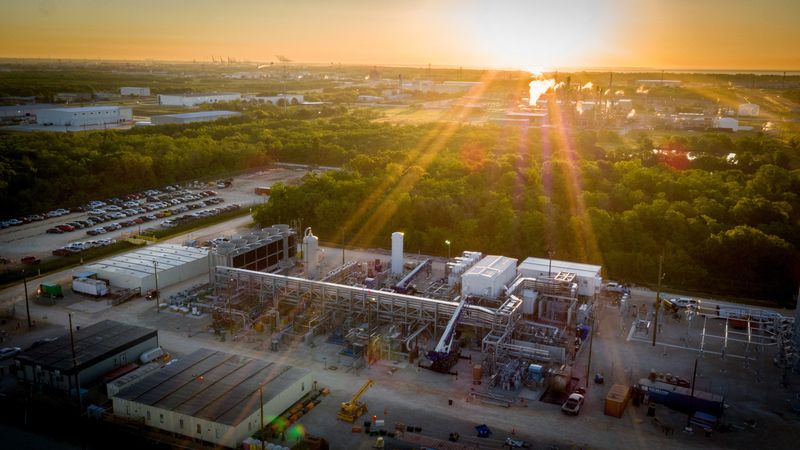 NET Power
NET PowerRemember, for negative emissions, you have to move more carbon from the biosphere to the geosphere than the reverse. If you dig up coal from the geosphere, burn it for electricity, recapture the carbon, and put it back in the geosphere, you’re not moving any net carbon from the biosphere to the geosphere. You’re just moving some from the geosphere back into the geosphere. You are creating (at best) carbon-neutral, not carbon-negative, power. You’re in the first category (preventing additional emissions), not the second (reducing net atmospheric carbon).
That’s not to say CCS for fossil-fueled plants and processes won’t be an important part of getting to negative emissions. There may be applications of fossil fuels we can’t figure out how to avoid, so we’ll need to bury their emissions regardless.
But to get negative, we‘ll have to do more. What are the options for getting to true negative emissions? While there are a number of ideas for how it might be done, including such techniques as adding alkalinity to the ocean by weathering stones, there are only two that we have any idea how to scale, at least currently.
The first is bioenergy with carbon capture and sequestration (BECCS), which involves burning biomass (plants or biowaste) in a thermal power plant, capturing CO2 from the exhaust stream, and burying the CO2. Biomass is from the biosphere, so this really does involve transferring carbon from the biosphere to the geosphere — reducing net atmospheric carbon.
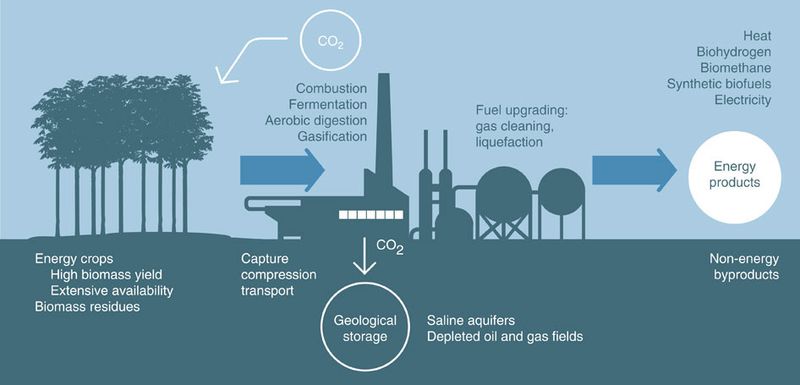 Sanchez 2015
Sanchez 2015Models that show us hitting the Paris climate target of “well below” 2°C rise in global average temperature almost all involve enormous amounts of negative emissions, which they mostly get from BECCS.
The other potential negative emissions technology is DAC + carbon sequestration, which can move carbon from the air (the biosphere) into the ground (the geosphere).
Currently, as far as I know, there are only two DAC companies up and running in the world — Carbon Engineering and Climeworks (with a commercial plant in its home base of Zurich, Switzerland, and a pilot plant in Iceland). Neither is burying the carbon it captures. Climeworks’ commercial plant is selling its CO2 to greenhouses (ironic, somehow), and Carbon Engineering’s, as we shall see in a moment, is going to use its CO2 to make fuels. The one exception is Climeworks’ Iceland pilot plant, which captures its modest annual 50 metric tons of CO2 and buries it as basalt rock.
There’s no market for negative emissions in which DAC can compete
Why aren’t the commercial DAC plants burying their emissions?
Two reasons.
First, it’s like lighting money on fire. CO2 used for greenhouses has economic co-benefits (i.e., it’s worth money). Same with CO2 used to make fuels, or for enhanced oil recovery, or as an industrial feedstock. In contrast, burying CO2 has no economic co-benefits whatsoever. It’s not worth anything to anyone (except, y’know, humanity as a whole, over the long term).
The only way to make any money off sequestration is if a government is directly subsidizing it or if there’s an extremely high carbon price. The US has some new tax incentives for CCS, but nothing of the scale and stability that’s needed to encourage large, long-term infrastructure investments. And there’s no carbon price anywhere in the world big enough to make sequestration pay off. Carbon is around $18 a ton in Europe right now, which is pretty far below $94. (The lack of high carbon prices is also why there’s virtually no BECCS operating commercially.)
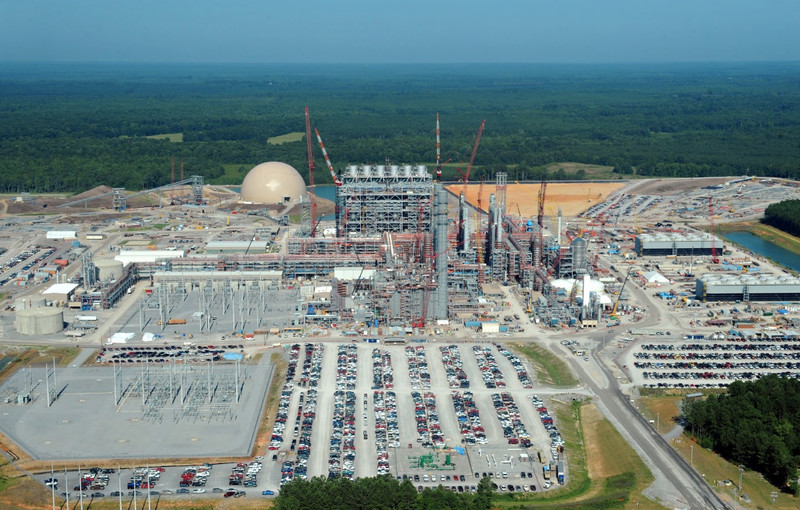 Wikipedia
WikipediaSecond, even if there were a market for sequestration, that market wouldn’t care where the buried carbon came from (nor should it — carbon is carbon). It would pay for any CCS, anywhere. That would put DAC in direct competition with carbon capture at thermal power plants, and it is always going to be easier to pull CO2 out of an exhaust stream, where it is concentrated (roughly 1 molecule out of every 10), than out of the air, where it is highly dispersed (roughly 1 molecule out of every 2,500).
Theoretically, DAC can be located anywhere, including right next to underground caverns suitable for carbon sequestration, so it could cut down on CO2 transport costs. But even that is unlikely to cancel the cost disadvantage.
Now, it may be that some blessed day, later in the century, we will have no more fossil fuel exhaust streams to pull CO2 from, and DAC will compete only with BECCS for sequestration funds. Then it might have a fighting chance; though its carbon capture costs are higher, it requires, Keith estimates, 30 to 100 times less land.
But that’s a long time off, and Carbon Engineering is a business, not a charitable enterprise, so it needs to do something with its captured CO2 that pays — pays enough to make the whole process worthwhile in the short term. That’s the only way DAC will be able to scale up.
And that brings us to Carbon Engineering’s value-add, which it hopes to use to compete in the first category: preventing emissions.
DAC works for removal OR air-to-fuels.
As a company @CarbonEngineer will go where market points, and it points to fuels.
As a citizen my vote would be focus on fuels first, develop tech for removal, but don’t start large scale use until emissions heading to zero
— David Keith (@DKeithClimate) June 8, 2018
DAC can produce very low-carbon fuels, for which there is a market
Instead of burying the CO2 it captures, Carbon Engineering plans to use it as an input to make synthetic fuels that can substitute for diesel, gasoline, or jet fuel.
A quick bit of background on synthetic fuels.
Creating synthetic fuels (there are a number of different kinds) involves combining a carbon-based molecule, usually CO2, with hydrogen. Electricity powers the process.
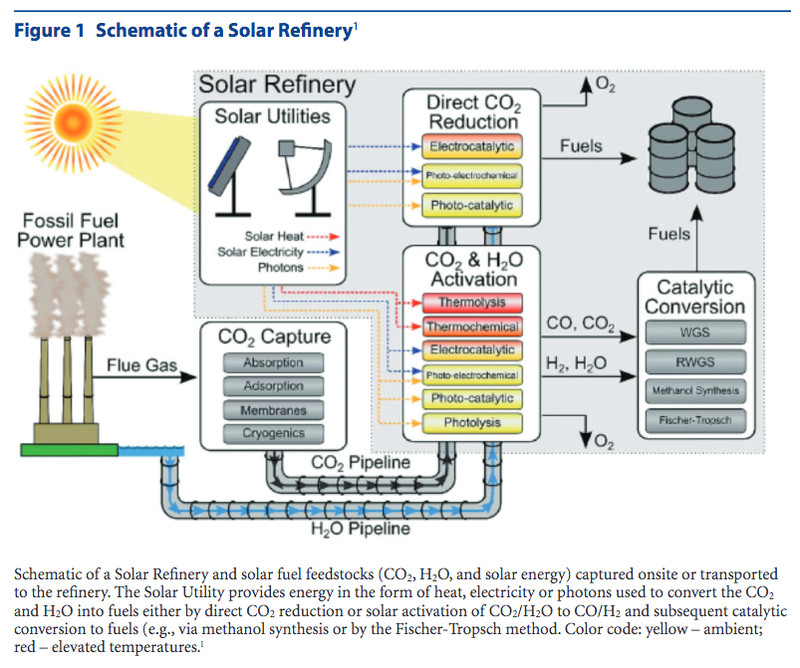 MIT
MITThe carbon intensity of the resulting fuels depends on the source of all three components: the electricity, the CO2, and the hydrogen.
If the electricity comes from fossil fuels, the CO2 comes from a fossil fuel exhaust stream (i.e., from the geosphere), and the hydrogen comes from steam reforming of natural gas (as roughly 95 percent of hydrogen does today), the resulting fuel is extremely carbon-intensive.
If the electricity comes from renewables, the CO2 comes from the air (i.e., the biosphere), and the hydrogen comes from solar-powered electrolysis, the resulting fuel is extremely low carbon.
Carbon Engineering wants to make very low-carbon fuels, with a process powered by renewables, using CO2 from the air, drawing hydrogen from electrolysis. The company calls the process “air to fuels,” or A2F, and it is targeting wide commercialization in 2021.
Lately, there’s been an upsurge of interest and experimentation around synthetic fuels. Last year, author and investor Chris Goodall argued at length that “using water electrolysis to make hydrogen, which is then merged with carbon-based molecules (such as CO2) to create synthetic natural gas and substitutes for petrol and aviation fuel, is likely to be the central feature of the next phase of world decarbonisation.”
Getting the CO2 for the process from the air rather than from fossil fuel emissions takes synthetic fuels from low-carbon to ultra-low-carbon. (Here’s a 2013 Carbon Engineering white paper: “Direct Air Capture as an Enabler of Ultra-Low Carbon Fuels.”)
Can Carbon Engineering make it work?
It depends on a few things — most of all the hydrogen. Getting hydrogen from electrolysis rather than SMR is more expensive, at least today, for the simple reason that natural gas tends to be cheaper than electricity. And Keith told me that getting hydrogen is 70 percent of the total cost of A2F.
But he and his colleagues have done some close work on the falling costs of both renewable energy and electrolysis and they’ve calculated, Keith told me over email, “commodity solar plus electrolysis can get hydrogen under 15 $/GJ by 2025.” (Depending on various assumptions, it’s somewhere between $20 and $25 today, he estimates.)
If those hydrogen costs pan out, the next challenge is competing in a market — specifically, a market in which the carbon content of fuel matters.
As it happens, there’s a pretty big one nearby: California has a low-carbon fuel standard (LCFS) that requires fuels sold in the state to steadily decline in carbon intensity. In practice, that means companies that sell fossil-based fuels have to source some lower-carbon fuels to offset them, through a credit trading system.
Right now, credits under the LCFS are trading for $150 per ton of carbon. That is meant to be the source of Carbon Engineering’s initial financing, funding its effort to scale up. That is how it can project capture costs under $100 a ton.
Electricity is likely to eventually fuel the bulk of passenger vehicles in a low-carbon scenario, but even in California, it will take decades to replace vehicle fleets, and in the meantime, there’s a multibillion-dollar market for low-carbon liquid fuels.
Can A2F compete in that market?
Friedmann, a student of carbon capture and recycling options, thinks it can. “I believe that DAC-based synthetic fuels will prove cheaper than biofuels and better,” he told me. “As carbon-free power becomes cheaper, this will become more true.”
Carbon Engineering is betting on it. Even at its projected fuel cost of $1 a liter in the early 2020s, A2F will still be more expensive up front than many biofuels. But it also has lower carbon content, which will mean it draws more carbon revenue from the LCFS.
Here is Carbon Engineering’s estimate of the carbon intensity (grams of CO2 per megajoule) of various fuels:
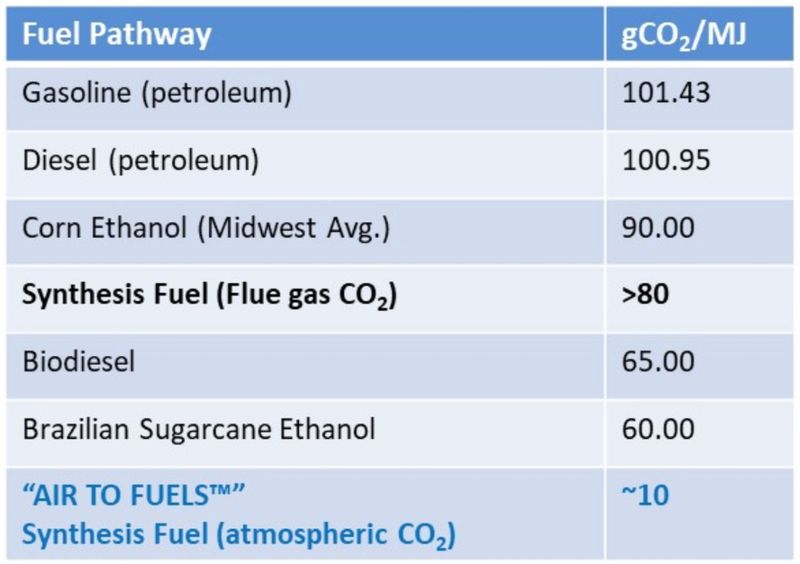 Carbon Engineering
Carbon EngineeringTwo important caveats about this chart. First, while other values are taken from the California Air Resource Board’s official numbers, the carbon intensity of synthetic fuel made with CO2 from fossil fuel exhaust streams (the fourth number down) is Carbon Engineering’s own estimate, based on physical flows. The company‘s Geoff Holmes (a co-author on the paper with Keith) told me that while the company “believe[s] it to be conceptually correct, it is intended to be representative, not numerically precise.”
And second, the carbon-intensity number for A2F represents a process that has been largely electrified, which is the company’s goal. Currently, for one part of the process (heating the “calciner”), it uses natural gas. That raises the carbon intensity of the fuel up to about 30 gCO2/MJ.
The basic point of the chart is clear, though: A2F has the lowest carbon intensity of any available form of low-carbon liquid fuel.
Whether that will be enough to compete in California’s low-carbon fuels market in the 2020s remains to be seen. To get started, Carbon Engineering just needs a buyer for its initial fuels and a contract for some very cheap renewable energy, and Keith says the company has both.
Ultimately, Climate Engineering doesn‘t want to be in the commodity fuels business. It just wants to optimize DAC to work for synthetic fuels — to show that A2F can work. Long-term, Holmes says, “our business plan is to license the technology.”
The long-term vision for DAC
As Keith once told Nature, “air capture has been stuck in a catfight between one group of people saying it’s a silver bullet and one group saying it’s bullshit. The truth is it’s neither.”
For now, DAC, in the form of A2F, is a helpful tool in the toolbox, a way to help avoid some of the emissions that would have come from burning liquid fossil fuels. And, Friedmann notes, “since DAC can be done anywhere, there’s a potential for distributed production of air fuels everywhere.” Every country could have access to its own source of what is effectively carbon-neutral oil. Someday that might begin to make a real dent on geopolitics.
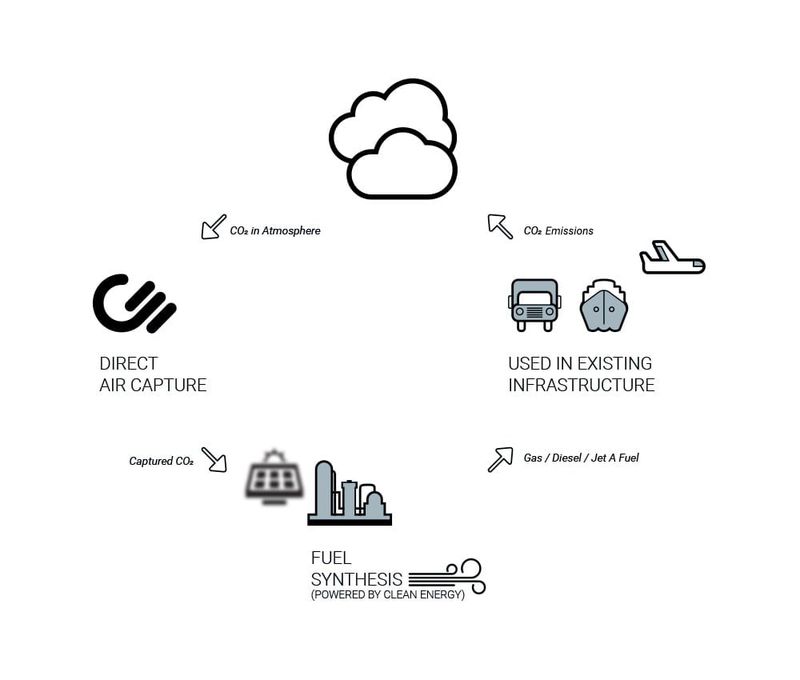 Carbon Engineering
Carbon EngineeringThat is all solidly, if modestly, good news.
In the future, A2F could play a bigger role, namely, absorbing surplus renewable energy for long-term storage, one of the key remaining pieces of the decarbonization puzzle.
From this perspective, synthetic fuels are just a stable (more stable than any chemical battery) way of storing solar and wind energy — helpfully, one that can make use of existing pipeline and distribution infrastructure. And A2F is the only way to make near-carbon-neutral synthetic fuels.
The market for long-term energy storage will eventually be very large, and it will probably start, like the low-carbon fuels market, in California. Companies that have scaled up A2F for the fuels market will be well-placed to pivot.
And finally, there may come a day when carbon prices are high, emissions are heading toward zero, and governments begin to spend serious money on negative emissions. That day is not likely for at least a few decades, though, and in the interim, DAC is likely to get much less expensive.
Carbon Engineering has used mostly off-the-shelf parts and established industrial processes, in the name of getting to demonstration scale for cheap. If Climate Engineering’s A2F proves able to compete in California‘s large low-carbon fuels market, the promise of profits will draw more companies into the A2F space, and they will begin customizing and fine-tuning parts and processes over time, including DAC itself. Competition will bring innovation.
By 2050, or whenever we start burying carbon in earnest, DAC is likely to be considerably cheaper — though sequestration itself will remain a titanic pain in the ass.
So DAC, via A2F, has a plausible (albeit highly speculative) short-term, mid-term, and long-term plan: fuels for transportation, then fuels for energy storage, then carbon for sequestration.
Of course, heaven only knows what role Keith’s company will end up playing in all that, but DAC itself is a bit of a Swiss army knife, useful in virtually any decarbonization scenario, so the technology seems likely to find a way forward one way or another.
In the end, DAC, like most clean energy technologies, is neither a silver bullet nor bullshit. It’s just a promising development in a world that needs all the promising developments it can get.
Read More
https://cdn.vox-cdn.com/community_logos/52517/voxv.png
